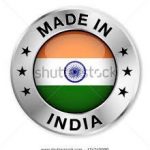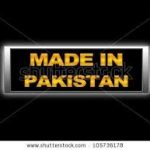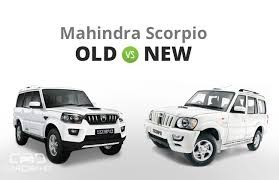The ‘Made In’ label matters while buying products
 The consumer behavior analysts have noted through many studies that ‘Country of Origin’ has
The consumer behavior analysts have noted through many studies that ‘Country of Origin’ has become a significant phenomenon in today’s marketing practices. The words ‘Made’ and ‘In’ conveys the strength of the product. The label ‘made’ on the packing label of the product refers to the manufacturing aspect of the origin of a product. It is often related to legal certifications, the technologies involved ingredients and techniques as well as work ethics and safety standards. And, ‘In’ refers to the origin and the geographical dimension of origin such as the location of the manufacturing process and the source of ingredients. ‘Made In’ therefore suggests information and associations that are both tangible and intangible. The ‘Made in’ tag helps consumers to make rational and emotional decision both.
become a significant phenomenon in today’s marketing practices. The words ‘Made’ and ‘In’ conveys the strength of the product. The label ‘made’ on the packing label of the product refers to the manufacturing aspect of the origin of a product. It is often related to legal certifications, the technologies involved ingredients and techniques as well as work ethics and safety standards. And, ‘In’ refers to the origin and the geographical dimension of origin such as the location of the manufacturing process and the source of ingredients. ‘Made In’ therefore suggests information and associations that are both tangible and intangible. The ‘Made in’ tag helps consumers to make rational and emotional decision both.
 In its 2005 “Year of Ideas” issue, The New York Times Magazine listed nation branding among the year’s most notable ideas. The way a country is perceived can make a significant difference to the success of its trade, business, tourism efforts, as well as its diplomatic and cultural relations with other nations. Simon Anholt coined the term ‘nation branding’ in 1996 and since then he has been working with governments to help them plan the policies, strategies, investments and advance which lead their country towards an improved profile and
In its 2005 “Year of Ideas” issue, The New York Times Magazine listed nation branding among the year’s most notable ideas. The way a country is perceived can make a significant difference to the success of its trade, business, tourism efforts, as well as its diplomatic and cultural relations with other nations. Simon Anholt coined the term ‘nation branding’ in 1996 and since then he has been working with governments to help them plan the policies, strategies, investments and advance which lead their country towards an improved profile and reputation. America has become the largest and most powerful brand in the globe; it virtually shapes the world in almost all dimensions such as national governance, policies, exports, people, tourism, economic and social status etc. In the fast growing global village nation’s branding is considered as big as federal mega-projects. Steve Silver and Sam Hill, both marketing experts define nation branding as most complex (brand) positioning problem; how can we brand a nation? A nation is as big as a Meta brand inclusive of numerous mega brands. There are so many mega activities of in a nation such as political governance, commerce, education, human resource development, environment, foreign affairs, infrastructure, environment, tourism, culture and heritage and most importantly the national character. The study of national character refers to anthropological studies after World War II.
reputation. America has become the largest and most powerful brand in the globe; it virtually shapes the world in almost all dimensions such as national governance, policies, exports, people, tourism, economic and social status etc. In the fast growing global village nation’s branding is considered as big as federal mega-projects. Steve Silver and Sam Hill, both marketing experts define nation branding as most complex (brand) positioning problem; how can we brand a nation? A nation is as big as a Meta brand inclusive of numerous mega brands. There are so many mega activities of in a nation such as political governance, commerce, education, human resource development, environment, foreign affairs, infrastructure, environment, tourism, culture and heritage and most importantly the national character. The study of national character refers to anthropological studies after World War II.
 The Japanese are known as law abiding people; the Americans are known for their grit for freedom – freedom of speech, freedom to pursue their own interests, freedom from bullying, freedom of religion, freedom of movement within the country, freedom to associate with whomever they please. The Chinese are known for their orientalism; the French are known as arty.
The Japanese are known as law abiding people; the Americans are known for their grit for freedom – freedom of speech, freedom to pursue their own interests, freedom from bullying, freedom of religion, freedom of movement within the country, freedom to associate with whomever they please. The Chinese are known for their orientalism; the French are known as arty.
The country of origin (COO) specifically matter to the customers because every country has its reputation and the association between the product and the country’s expertise matters while buying products. For example Italy is known for designs, North Caroline for furniture, France for fashion and wine, the USA for entertainment, India for spices, Germany is famous for cars. Today’s consumer understands legal and safety issues sharply. Consumers today look at the ‘made in’ label with many perspectives. The ‘made in’ dependent on a combination of many factors – from heritage, to design and physical manufacturing, skilled labour, infrastructure, market intermediaries etc. Hence manufacturers can leverage a lot on the country of origin as one of their competitive advantage. A company needs to be physically present in the country; the design and patents need to have emerged from talent in the country, or the brand needs to have factories or parts of the production process in the origin nation. In the past, when it was enough to ‘borrow’ associations from a country for pure marketing purposes, today consumers not ready to accept country of origin as a choice driver unless it is bona fide.
Successful brands contribute to nation branding. Of the world’s 500 largest stock-market-listed companies measured by revenue in 2014, among the Fortune 500 companies 28 are headquartered in Germany. Well-known global brands include Mercedes Benz, BMW, SAP, Volkswagen, Audi, Siemens, Allianz, Adidas, Porsche and DHL. Thus, famous brands strengthen branding of a country. Similarly, brands across every category, like Apple, Cadillac, Clinique, Coca-Cola, Ford, Kellogg’s, McDonald’s, Microsoft, Ralph Lauren, Starbucks and M&M’s have made the USA a strong nation brand. These corporate have made Germany and America leading nation brands.
 The concept of branding is viewed as ‘cultural diplomacy’ of nations. It is a somewhat new way of looking at a nation, but every nation is already a brand. Every nation is perceived in the minds of people living differently in nooks and corners of the world. Some countries are known for good things, some for bad, and others have mixed insights. Based on the different perceptions, nations in the world interact and do business with each other, either contributing to its development or encumbering it. For example Africa is associated with civil war, Iraq with suicide bombings, Pakistan for terror bombing, India for scam and Cuba with Fidel Castro’s dictatorship (though he is dead). On the other hand, countries such as the US, Canada, Germany or France, are perceived positively for decades for their sound political and economic development. Nation branding is based on the underlying hypothesis that every nation can make a good or bad brand depending on its efforts. The important thing to realize about branding a nation is that one of its ingredients is the escalating value of something that is found already within that nation.
The concept of branding is viewed as ‘cultural diplomacy’ of nations. It is a somewhat new way of looking at a nation, but every nation is already a brand. Every nation is perceived in the minds of people living differently in nooks and corners of the world. Some countries are known for good things, some for bad, and others have mixed insights. Based on the different perceptions, nations in the world interact and do business with each other, either contributing to its development or encumbering it. For example Africa is associated with civil war, Iraq with suicide bombings, Pakistan for terror bombing, India for scam and Cuba with Fidel Castro’s dictatorship (though he is dead). On the other hand, countries such as the US, Canada, Germany or France, are perceived positively for decades for their sound political and economic development. Nation branding is based on the underlying hypothesis that every nation can make a good or bad brand depending on its efforts. The important thing to realize about branding a nation is that one of its ingredients is the escalating value of something that is found already within that nation.
Consumers in developing countries like India, China, and Brazil still tend to prefer brands that come from other countries. Global supply, manufacture and export of goods began to accelerate in response for lower prices and greater choice of goods. Companies became international or multinational and the rise of an affluent middle class in the USA, Europe, India, China and UAE demand more sophisticated marketing. Due to rise of consumerism, categories of goods and services became more sharply defined. And, most brands started crossing the borders of their origin. With all the great business strategies, advertising, marketing and intelligent supply chain strategies even today in the 21st century for most of the brands, their place of origin and heritage continues to be a key part of their appeal and differentiation. Their name, identity, design and symbolism of logos or trademarks become synonymous with their country or place of origin.
We should realize the fact that Brand building in emerging markets is a difficult task. As the rapid growth in an emerging market gives millions of consumers new spending power, they eye for and are encouraged by their counterpart in developed countries to buy established brands. Marketing efforts in developing countries is very multifarious.
In 2003, when Mahindra & Mahindra launched a smartly designed sport-utility vehicle called the Scorpio, CNBC India, BBC World’s ‘Wheels’ program, and others chose the vehicle for the
 ‘Car of the Year’ awards in the SUV category. That was not a small achievement: The made-in-India automobile won top honors ahead of global best sellers such as the Mercedes-Benz-E-Class and Toyota Camry sedans. To M&M, which manufactures tractors in several countries as well as vehicles targeted at India’s semi-urban and rural markets, the awards signaled that it could finally take the world’s automakers head-on. Even as the Scorpio successfully battles multipurpose vehicles like Toyota’s Innova and GM’s Chevy Tavera at home, M&M has started marketing the SUV in South Africa, Spain and many other countries.
‘Car of the Year’ awards in the SUV category. That was not a small achievement: The made-in-India automobile won top honors ahead of global best sellers such as the Mercedes-Benz-E-Class and Toyota Camry sedans. To M&M, which manufactures tractors in several countries as well as vehicles targeted at India’s semi-urban and rural markets, the awards signaled that it could finally take the world’s automakers head-on. Even as the Scorpio successfully battles multipurpose vehicles like Toyota’s Innova and GM’s Chevy Tavera at home, M&M has started marketing the SUV in South Africa, Spain and many other countries.
As a nation, Singapore’s stunning rise from third world to first world in a matter of 30 years was spearheaded by an intensive and rigorous closely-coordinated programme of nation branding. Today, brand Singapore attracts the investments, business, trade, tourism and talented human resources from all over the world which is helping it further to become more flourishing nation. This state is internationally known as a vibrant, safe, corruption-free place to do business. Name any of the great businesses of the world; everybody wants to be in Singapore! The vibrancy and liveliness of the nation in its culture and the fine art attracts more and more tourists. In global surveys of quality of life, Singapore regularly tops the charts.
Nation Branding is catching up rapidly: the brand must be accepted internally first, i.e domestically, meaning throughout the nation, by all stakeholders. Only then can it be effectively promoted internationally.













































